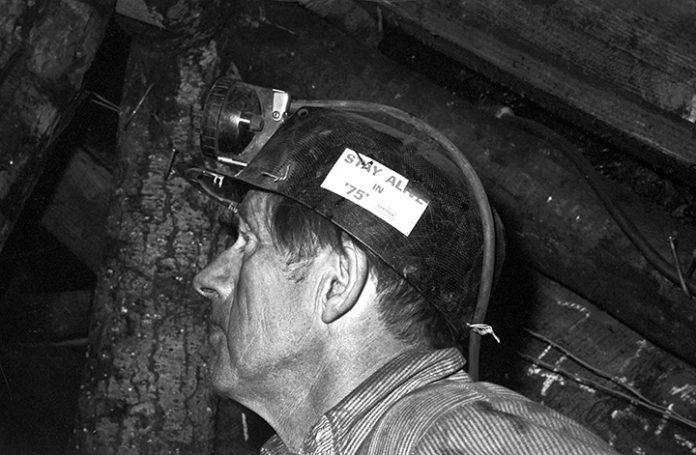Joe Ozbolt possessed the picturesque face and stoic countenance of a coal miner. During the last years of coal mining in Washington State, his photo appeared in both the Seattle Times and P-I. Ozbolt was born in 1915, but never completed schooling. At age 15, he went to work with his father, John Ozbolt digging coal at the Independent Mines in the Roslyn-Cle Elum area. There Joe learned underground coal mining from the bottom up: laying tracks, timbering, safety regulations, drilling, and explosives, especially how to achieve optimum coal breakage from a dynamite blast.
In Jan. 1937, Ozbolt began work as a machine loader for the Northwestern Improvement Company at their No. 9 mine in Roslyn. He remained a coal miner for the next 50 years, save for a four-year stint in the Army during World War II. His last shift at the Roslyn’s No. 9 was Dec. 20, 1963, when he was laid off due to the mine’s imminent closure. Joe next traveled west to Ravensdale for work at Palmer Coking Coal’s Rogers No. 3 mine. On week days he lived in a nearby Ravensdale trailer park, and each weekend drove to his home, located at 42 Shaft Street in Roslyn to be with his wife Katherine (Maybo). Joe, like many of his Croatian brethren, was proud of his Slavic heritage. As a local hero, Ozbolt was King Coal at Roslyn’s Coal Miners’ Festival on Labor Day 2000.
Seen on Ozbolt’s hard hat is a Stay Alive in ’75 sticker, distributed by the recently created Mine Enforcement and Safety Administration, precursor to MSHA. This April 1974 photograph was taken by Barry Kombol who worked in the Rogers No. 3 mine at the time. Over a period of three shifts, Barry took nearly 200 photos documenting miners and their working environment. Rogers No. 3 closed permanently on Dec. 17, 1975 at 2:30 pm. It was Washington’s last underground coal mine.








